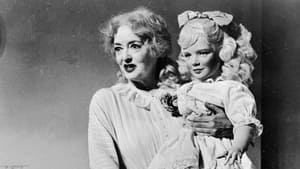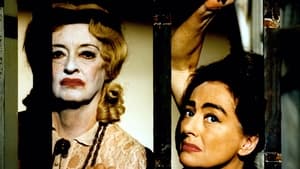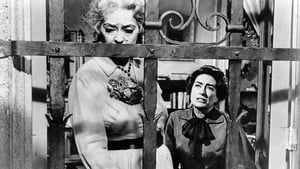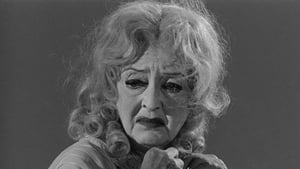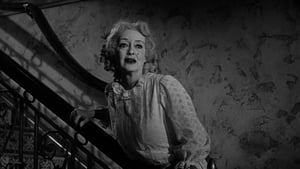Contact: info@alwanfilm.com
Video Sources 0 Views

Synopsis
What Ever Happened to Baby Jane 1962 Colorized Review: A Thrilling Psychological Horror Classic

Introduction
When it comes to psychological horror, few films have left as indelible a mark as What Ever Happened to Baby Jane? (1962). Directed by Robert Aldrich and starring the legendary Bette Davis and Joan Crawford, this film is a masterclass in suspense, psychological tension, and the horrors of a decaying Hollywood dream. Set against the backdrop of a faded mansion in Los Angeles, the film tells the haunting tale of two sisters, one a former child star and the other a forgotten actress, locked in a battle of jealousy, bitterness, and madness.
This review will explore the film’s impact on the psychological horror genre, the remarkable performances of its leading actresses, the story’s complexities, and the legacy it left behind. We will also delve into the historical context of the film’s release, its critical reception, and the lasting debate over its portrayal of aging, fame, and sibling rivalry.
Check The Full Colorized Movies List
Check Our Colorized Movies Trailer Channel
Understanding What Ever Happened to Baby Jane 1962 Colorized: Director, Cast, and Genre
Robert Aldrich’s Vision
Robert Aldrich, known for his daring and unconventional filmmaking style, brought a unique vision to What Ever Happened to Baby Jane? Aldrich was fascinated by stories that explored the darker sides of human nature, and his direction of this film reflects that interest. With an emphasis on claustrophobic settings, disturbing imagery, and tense character interactions, Aldrich creates a world that feels both eerily real and grotesquely surreal.
Aldrich’s ability to create suspense and psychological unease was a driving force behind the film’s success. His direction not only brings out the best in his actors but also crafts a haunting atmosphere that leaves a lasting impression on the audience. The film’s stark black-and-white cinematography further enhances its chilling mood, emphasizing the decay and despair at the heart of the story.
Iconic Performances: Bette Davis and Joan Crawford
The performances of Bette Davis as Baby Jane Hudson and Joan Crawford as Blanche Hudson are nothing short of iconic. Davis, known for her fearless approach to roles, delivers one of the most memorable performances of her career. As the deranged and vengeful Jane, Davis embodies the character’s delusional state with a chilling mix of pathos and terror. Her grotesque makeup, manic laughter, and unpredictable mood swings create a character that is both pitiable and terrifying.
Crawford, on the other hand, plays the tormented Blanche with a quiet dignity that slowly unravels as the film progresses. Confined to a wheelchair and at the mercy of her abusive sister, Crawford’s portrayal of Blanche is nuanced and heartbreaking. The dynamic between Davis and Crawford is electric, filled with tension that mirrors the real-life animosity between the two actresses. Their on-screen rivalry adds a layer of authenticity to their performances, making their interactions even more gripping.
Exploring the Genre: Psychological Horror Meets Gothic Thriller
What Ever Happened to Baby Jane? is often classified as a psychological horror film, but it also incorporates elements of the Gothic thriller genre. The decaying Hollywood mansion, the theme of faded glory, and the twisted sibling relationship all contribute to the film’s Gothic atmosphere. The film’s exploration of psychological torment, identity loss, and the dark side of fame sets it apart from traditional horror, focusing less on supernatural scares and more on the horrors of the human mind.
The film’s blending of genres makes it a standout in the horror canon, influencing future psychological thrillers and films about deteriorating mental states. It’s a character-driven horror that focuses on the psychological breakdown of its protagonists, creating a sense of dread that is deeply personal and unnervingly real.
Exploring the World of What Ever Happened to Baby Jane 1962 Colorized: Plot and Characters
Detailed Synopsis
The film opens with a glimpse into the early 20th century, where Baby Jane Hudson (Bette Davis) is a beloved child star, adored by fans and indulged by her father. Meanwhile, her sister Blanche (Joan Crawford) watches from the sidelines, overshadowed by Jane’s fame. However, as they grow older, the roles reverse; Jane’s career fades, and Blanche becomes a successful actress. A mysterious car accident leaves Blanche paralyzed, ending her career and leaving her in Jane’s care.
Fast forward to the 1960s, and the sisters are living together in a decaying Hollywood mansion. Jane, bitter and resentful, torments Blanche with psychological and physical abuse. The film delves into Jane’s deteriorating mental state as she clings to her past glory, attempting to revive her old vaudeville act in a desperate bid for attention. Blanche, helpless and confined, becomes increasingly isolated and fearful as Jane’s behavior spirals out of control.
Key moments include Jane’s gruesome acts of cruelty, such as serving Blanche a dead rat for dinner and denying her contact with the outside world. The tension builds to a shocking climax, revealing a devastating truth about the accident that forever altered their lives. The film’s ending is both tragic and haunting, leaving viewers with a sense of dread that lingers long after the credits roll.
Complex Protagonists and Memorable Supporting Characters
What Ever Happened to Baby Jane? is driven by its complex protagonists, Baby Jane and Blanche Hudson. Jane is a deeply flawed character, trapped in a cycle of resentment and delusion. Her inability to move on from her past glory drives her to madness, and Davis’s portrayal captures the tragic irony of a woman who was once adored but is now monstrous in her desperation.
Blanche, though physically weaker, is emotionally strong and represents a tragic figure of lost potential. Crawford’s performance adds depth to the character, depicting Blanche’s inner strength and vulnerability as she tries to survive Jane’s relentless torment.
Supporting characters, including Edwin Flagg (Victor Buono), a pianist and aspiring performer who becomes entangled in Jane’s delusions, add to the film’s tension. Buono’s portrayal of Flagg as a disinterested and opportunistic character highlights the theme of exploitation that runs throughout the film.
The Art of Film Colorization: A Black-and-White Masterpiece
Understanding the Black-and-White Aesthetic
What Ever Happened to Baby Jane? was deliberately shot in black and white, a choice that significantly contributes to the film’s unsettling atmosphere. The stark contrasts of light and shadow heighten the sense of claustrophobia within the Hudson mansion, while the lack of color reflects the bleakness of the characters’ lives. Aldrich’s use of high-contrast lighting and deep shadows adds a layer of visual tension, echoing the psychological turmoil of the sisters.
The decision to avoid colorization, even in later releases, has preserved the film’s original artistic vision. The black-and-white format not only underscores the film’s themes of decay and despair but also serves as a reminder of the golden age of Hollywood that both sisters once inhabited.
Early Black-and-White Films: A Brief History
The Power of Monochrome in Cinema
Black-and-white films have long held a powerful place in cinematic history, with the format often used to emphasize mood, tone, and artistic expression. The monochrome aesthetic allows filmmakers to play with light and shadow in ways that color films cannot, creating a visual language that speaks directly to the audience’s emotions.
Films like What Ever Happened to Baby Jane? leverage this aesthetic to evoke a sense of nostalgia while simultaneously exploring themes of disillusionment and loss. The lack of color in the film mirrors the faded glory of its protagonists and enhances the film’s psychological impact.
What Ever Happened to Baby Jane? 1962 and Its Iconic Black-and-White Version
The Impact of the Visual Style
The decision to shoot What Ever Happened to Baby Jane? in black and white was a deliberate artistic choice that heightened the film’s psychological horror elements. The monochrome palette reflects the stark realities of the sisters’ lives, emphasizing the decaying mansion and the physical and emotional deterioration of the characters.
The film’s visual style also serves to disconnect the viewer from reality, immersing them in the twisted world of the Hudson sisters. The lack of color forces the audience to focus on the performances, facial expressions, and setting, making the horror more intimate and personal.
The Debate Over Psychological Horror and Its Representation of Mental Illness
Controversy and Criticism
What Ever Happened to Baby Jane? has been both praised and criticized for its portrayal of mental illness. While the film masterfully depicts the psychological unraveling of its characters, some critics argue that it sensationalizes mental health issues for dramatic effect. The portrayal of Jane’s descent into madness, though compelling, has been viewed as an extreme and exaggerated representation of mental illness, which could perpetuate negative stereotypes.
Despite these criticisms, the film’s exploration of psychological horror remains a significant aspect of its appeal. It delves into the complexities of human behavior, exploring how trauma, jealousy, and unfulfilled dreams can drive individuals to darkness.
Examining What Ever Happened to Baby Jane 1962 Colorized as a Psychological Horror Film
Enhancing the Viewing Experience
What Ever Happened to Baby Jane? is a quintessential psychological horror film that manipulates the viewer’s emotions through its intense character dynamics and claustrophobic setting. The film’s ability to maintain tension through dialogue, setting, and minimal special effects demonstrates Aldrich’s mastery of the genre.
The psychological horror elements are not reliant on traditional scares but instead focus on the terrifying nature of human relationships gone awry. The film’s power lies in its ability to make the audience feel trapped alongside Blanche, experiencing her fear and helplessness as Jane’s madness escalates.
Influence and Legacy: What Ever Happened to Baby Jane 1962 Colorized’s Impact on Cinema
A New Era of Horror
What Ever Happened to Baby Jane? was a groundbreaking film that paved the way for a new type of horror—one that focused on psychological tension rather than supernatural elements. The film’s success led to a wave of similar films in the 1960s and 1970s, often referred to as “hagsploitation” or “psycho-biddy” movies, where aging actresses played deranged or vengeful characters.
The film’s influence can be seen in later works such as Misery (1990), Black Swan (2010), and even television series like Feud: Bette and Joan (2017), which dramatizes the behind-the-scenes rivalry of Davis and Crawford during the making of What Ever Happened to Baby Jane?
Themes Explored in What Ever Happened to Baby Jane 1962 Colorized
Darkness, Fame, and Family Ties
The film delves deeply into themes of fame, jealousy, and the toxic dynamics of family relationships. It explores the impact of past glories and failures on the psyche, highlighting how the pursuit of fame can lead to self-destruction. The relationship between Jane and Blanche is a tragic portrayal of sibling rivalry taken to the extreme, fueled by bitterness and unresolved guilt.
The film also touches on the theme of aging in Hollywood, particularly the industry’s tendency to discard older actresses. Both Jane and Blanche’s lives are marked by this harsh reality, making their personal vendettas all the more poignant.
Reception and Controversy Surrounding What Ever Happened to Baby Jane 1962 Colorized
Initial Reviews and Lasting Impact
Upon its release, What Ever Happened to Baby Jane? received widespread acclaim for its bold storytelling and the performances of its leading ladies. Critics praised the film for its suspenseful narrative and the captivating dynamic between Davis and Crawford. However, the film also sparked controversy due to its disturbing themes and the real-life feud between its stars.
Despite the controversy, the film’s impact on the horror and thriller genres is undeniable. It challenged conventional narratives and proved that horror could be found in the psychological torment of everyday life, rather than just in supernatural forces.
Where to Watch What Ever Happened to Baby Jane 1962 Colorized Online
For fans of classic psychological horror, What Ever Happened to Baby Jane? is available on several streaming platforms, including Amazon Prime Video, HBO Max, and Criterion Channel. The film is also available for purchase on DVD and Blu-ray, offering viewers the chance to experience this chilling classic in its original format.
FAQs About What Ever Happened to Baby Jane 1962 Colorized
Q: Who directed What Ever Happened to Baby Jane? (1962)?
A: The film was directed by Robert Aldrich, known for his bold and unconventional approach to filmmaking.
Q: What is the significance of the film’s black-and-white format?
A: The black-and-white aesthetic enhances the film’s psychological horror elements, emphasizing the decaying mansion and the emotional deterioration of the characters.
Q: How did the real-life feud between Bette Davis and Joan Crawford impact the film?
A: The animosity between Davis and Crawford added an extra layer of tension to their on-screen performances, making their interactions even more compelling and believable.
Q: What themes does the film explore?
A: The film delves into themes of fame, sibling rivalry, mental illness, and the dark side of Hollywood.
Q: Is the film based on a true story?
A: The film is not based on a true story but was adapted from the novel of the same name by Henry Farrell, which fictionalizes the psychological decline of two former stars.
Conclusion
What Ever Happened to Baby Jane? (1962) stands as a quintessential example of psychological horror, blending suspense, complex characters, and chilling performances into a film that remains relevant and terrifying to this day. Robert Aldrich’s direction, combined with the powerhouse performances of Bette Davis and Joan Crawford, creates a cinematic experience that is both haunting and unforgettable.
The film’s exploration of psychological torment, the decay of fame, and the destructive power of jealousy has left an indelible mark on the genre, influencing countless films and filmmakers. Whether watched for its suspenseful narrative, its masterful performances, or its place in film history, What Ever Happened to Baby Jane? continues to captivate and unsettle audiences, proving that some horrors are all too human.
